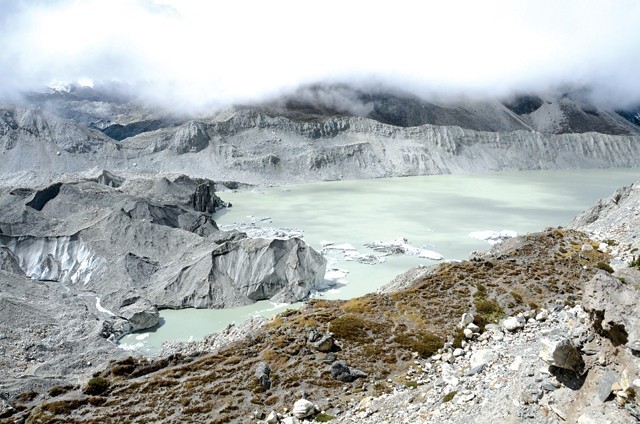Pachpale Kharka: A Hidden Sanctuary in the Solu-Khumbu Region Professional
Oct 21st, 2023 at 08:59 Blogs Solukhumbu,Nepal 271 views Reference: 787Location: Solukhumbu,Nepal
Price: Contact us
Introduction
Nestled amidst the rugged terrain of the Solu-Khumbu region in Nepal, where the grandeur of the Himalayas meets the spiritual essence of ancient legends, lies Pachpale Kharka—a remote and sacred site shrouded in mystique. This serene enclave, far from the bustling trails of popular treks, holds profound spiritual significance as it is associated with Guru Rinpoche, a revered figure in Tibetan Buddhism. In this article, we embark on a journey to explore the spiritual legacy, natural beauty, cultural importance, and the sense of tranquility that defines Pachpale Kharka.
Historical Roots: Guru Rinpoche's Blessings
Pachpale Kharka derives its significance from the teachings and blessings of Guru Rinpoche, also known as Padmasambhava. According to local lore, it is believed that Guru Rinpoche, the 8th-century Indian saint who played a pivotal role in spreading Buddhism across the Himalayan region, meditated and blessed this secluded spot. The energy of his spiritual practice is said to still permeate the air, making Pachpale Kharka a place of reverence for pilgrims and seekers of spiritual wisdom.
Natural Splendor: Where Beauty Meets Tranquility
The journey to Pachpale Kharka is an adventure in itself. As trekkers traverse through dense forests, cross roaring rivers, and ascend challenging terrains, they are rewarded with the awe-inspiring beauty of the Solu-Khumbu landscape. Rhododendron forests, alpine meadows, and cascading waterfalls paint a picturesque backdrop, creating an atmosphere of serenity and wonder.
Arriving at Pachpale Kharka, trekkers are greeted by the sight of prayer flags fluttering in the mountain breeze, adding a touch of spirituality to the natural splendor. The panoramic views of snow-capped peaks and lush valleys evoke a sense of awe, reminding visitors of the profound connection between nature and the divine.
Cultural Significance: Pilgrimage and Rituals
Pachpale Kharka is not just a destination; it is a pilgrimage site for devotees of Tibetan Buddhism. Pilgrims from Nepal, Tibet, Bhutan, and beyond embark on the arduous journey to seek blessings and meditate in the footsteps of Guru Rinpoche. The site holds an annual festival, where devotees gather to participate in prayers, rituals, and cultural performances. These rituals, accompanied by the chanting of mantras and the aroma of incense, create an atmosphere charged with spiritual energy.
Preservation and Sustainability: Balancing Tourism and Sacredness
The increasing interest of trekkers and tourists in Pachpale Kharka raises questions about preserving its sacredness while accommodating visitors. Local communities, along with conservation organizations, are working together to strike a balance between promoting sustainable tourism and maintaining the sanctity of the site. Initiatives focused on responsible trekking, waste management, and cultural sensitivity are being implemented to ensure that the spiritual ambiance and natural beauty of Pachpale Kharka remain intact for future generations.
Conclusion: Pachpale Kharka—Where the Divine Resides
In the heart of the Solu-Khumbu region, Pachpale Kharka stands as a testament to Nepal’s spiritual richness and natural grandeur. It is more than just a remote spot on the map; it is a sanctuary where the divine presence of Guru Rinpoche lingers in the mountain air, where trekkers find solace in the embrace of nature, and where pilgrims connect with the essence of Tibetan Buddhism.
As the sun sets over the Himalayan peaks and the stars illuminate the night sky, Pachpale Kharka becomes a place where the boundaries between the earthly and the spiritual blur. In the quietude of meditation and the shared reverence of pilgrims, the site becomes a living testament to the enduring power of faith, the wonders of nature, and the wisdom of ancient sages.
Pachpale Kharka is more than a trekking destination; it is a sacred haven, a hidden sanctuary, and a reminder that amidst the challenges of the modern world, there are places where the soul can find peace and the spirit can touch the divine. In its secluded beauty, amidst the whispers of the wind and the rustle of leaves, one finds a reflection of Nepal’s soul—a soul deeply connected to its spiritual heritage, rooted in nature, and bound together by the threads of reverence and wonder.






